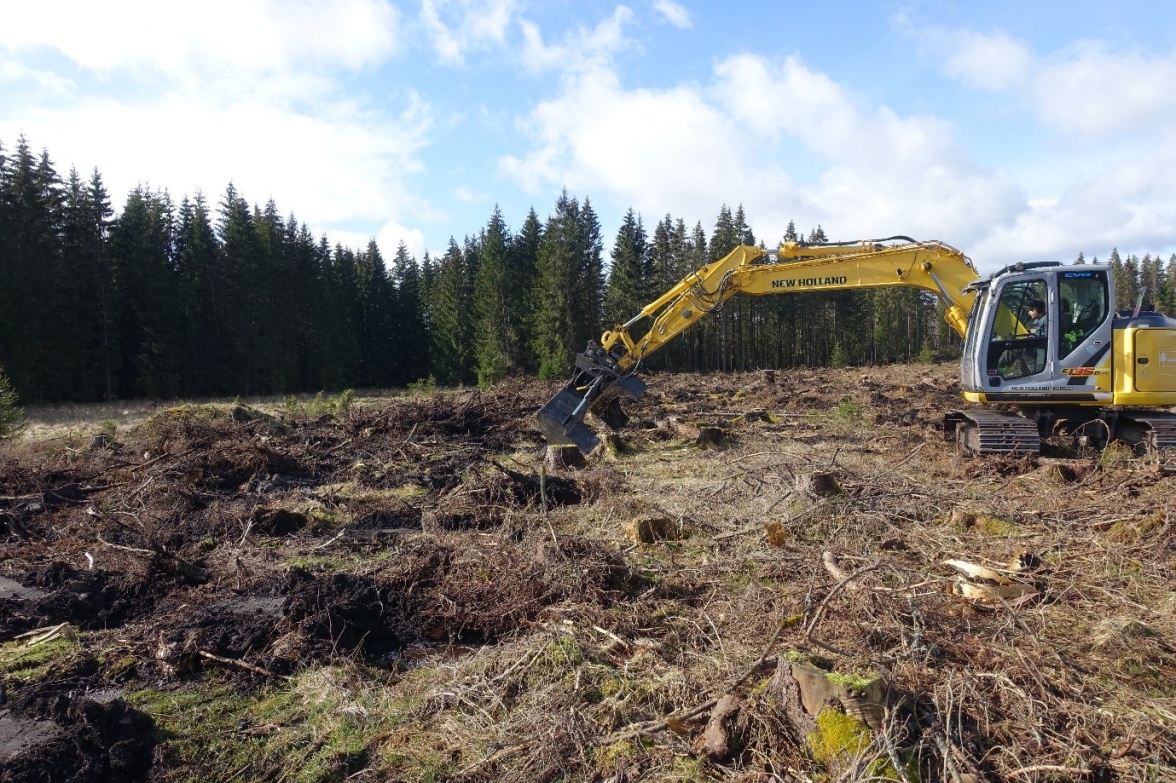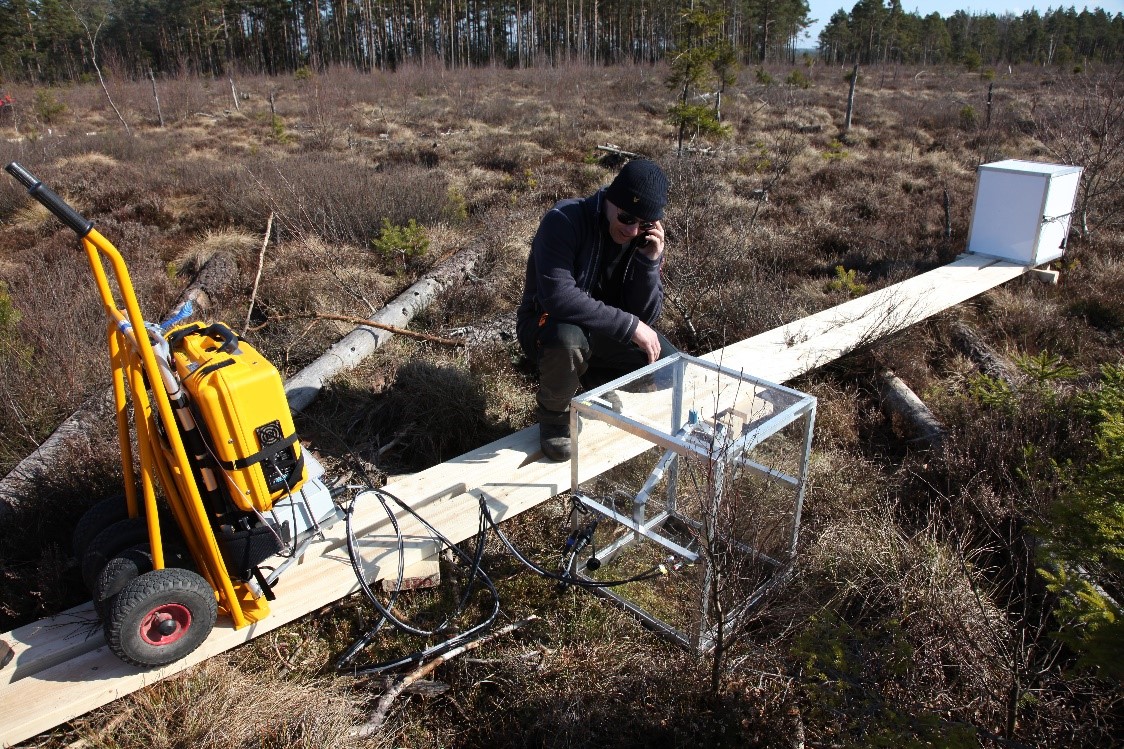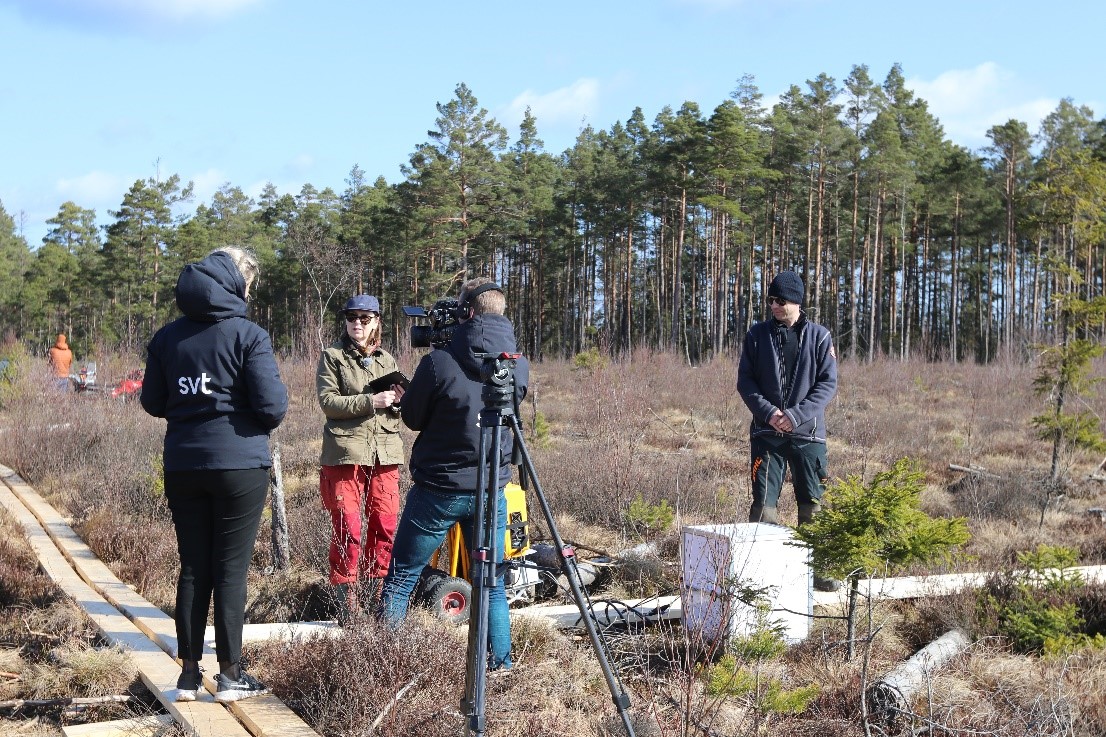
Fig 1. Excavator heaps up mounds to restructure the drained organic soil site at Följemaden. Photographer: David Allbrand
Drained organic soils, like Följemaden in Skogaryd are large sources for greenhouse gas (GHG) emissions. Research studies show if these soils are restructured and rewetted the net climate effect from all GHG will be reduced, even if methane emission increases, due to short atmospheric residence time of methane. A recently publish Nature article supports this conclusion (Günther et al., 2020). Följemaden was drained in 1875 first used for agriculture, then re-planted with spruce in the 1950ies. The trees were harvested in 2019 and the northern part of the area will be rewetted in order to reduce GHG emissions by building a dam construction in 2020. This is a major task for Skogaryd Research Catchment. The southern part was re-drained and the site prepared in February-March (Fig. 1) and will be replanted in spring 2020. At Följemaden we have performed flux studies within the forest stand, which will now be continued after the clear-cut and the following restoration by using micrometeorological techniques. Two flux towers in the northern and southern area respectively combined with automatic and manual flux chamber systems will allow a great coverage for the monitoring of GHG emissions.

Fig 2. The VIRV project aims to study GHG emissions on restored nutrient poor mires at Skogaryd Research Catchment. The flux measurements started on the 7th of April. Photographer: Leif Klemedtsson
For studying GHG flux spatial variability affected by wetness gradient or disturbances a new manual chambers system was designed (Fig 2). This equipment will be used both by a Formas project at Skogaryd (A guide to convert high GHG emitting drained organic soils into areas with negative emissions) and within an EU project (GRIP on Life IP (LIFE16 IPE SE 009 Action C6.2, called VIRV) in co-operation with the Regional County board of Jönköping and Jämtland.

Fig 3. The Swedish Radio (SR) visited the Anderstorp Stormosse in Jönköping County the 7th of April to report on the importance of these projects in regard to mitigations of GHG emissions. Photographer: Leif Klemedtsson